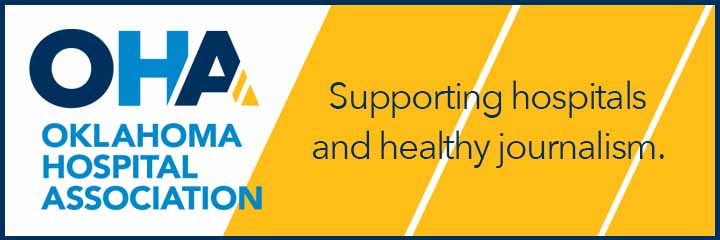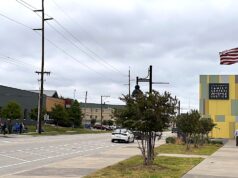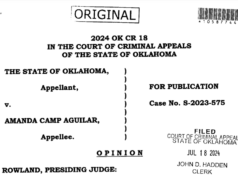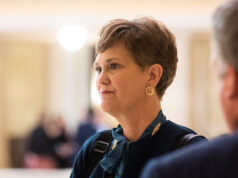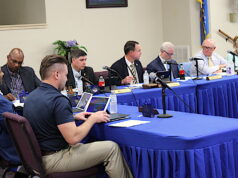

(Update: On Monday, July 15, supporters submitted signatures to the Oklahoma Secretary of State’s Office in an effort to qualify State Question 832 for the ballot. Secretary of State Josh Cockroft said his office has contracted with Western Petition Systems to review the signatures, although he did not offer a timeline for completion of the count. The following article remains in its original form.)
The clock is ticking for a signature collection effort to put State Question 832 on the ballot and ask Oklahomans to raise the minimum wage for the first time since 2008. Organizers have 90 days to collect the necessary signatures after the state Supreme Court gave the petition a green light.
SQ 832 proposes a staggered increase to Oklahoma’s minimum wage that would climb from the current $7.25-per-hour figure to a $15-per-hour minimum by 2029. The first increase would be a raise to $9 an hour next year. An increase to $10.50 would come in 2026. The minimum wage would grow to $12 in 2027 and $13.50 per hour in 2028.
Further increases beyond $15 an hour would be tied to the federal consumer price index. A key metric, CPI is calculated by the U.S. Bureau of Labor Statistics as a weighted average for a variety of goods and services that are representative of consumer spending in the United States.
While proponents argue the CPI component of SQ 832 would prevent Oklahoma wages from falling behind inflation in the future, it has also become one of the initiative’s most controversial aspects for critics who believe the policy is too open-ended.
“Every year thereafter, we would have an automatic, unlegislated increase in the minimum wage that happens regardless of whether the Legislature takes action or not and all of that is tied to the cost of living in larger cities like San Francisco or Chicago or Miami, not what the cost of living looks like in Oklahoma,” State Chamber Research Foundation executive director Ben Lepak said.
But University of Central Oklahoma economics professor Travis Roach said tying future automatic increases to the consumer price index helps prevent the issue from being constantly debated and litigated in decades to come.
“It ties future wage increases to cost of living adjustments,” Roach said. “Missouri is also doing that, and it has gone pretty well. It’s at $12.30 right now. They also match the price index. It makes sure people don’t have to come back and fight this fight in the future.”
Oklahoma’s cost of living remains lower than many states, but even here rising housing and consumer prices have impacted residents. And while costs have risen, the state’s minimum wage has not.
Currently, Oklahoma’s minimum wage of $7.25 per hour matches the federal statute. After inching upward from $6.55 in 2008, the federally mandated minimum wage has stayed the same for 16 years.
For those in support, State Question 832 is about making sure workers can pay bills, afford housing and have a life beyond work.
“We know that prices are already increasing,” SQ 832 organizer Amber England said. “Gas and grocery costs and housing are all going up, and we haven’t had a minimum wage increase in 16 years. Essential workers that were relied on during the pandemic — whether they work in health care, fast food or grocery stores — deserve a pay raise.”
England said the policy proposed by SQ 832 “says a lot about the dignity of work and how it is valued.”
“Some people don’t want to have that discussion, but we can collectively send a message as a state that we want to improve people’s lives, and if you work for a living you should be able to earn a living,” she said.
SQ 832 still walking a rocky road to the ballot
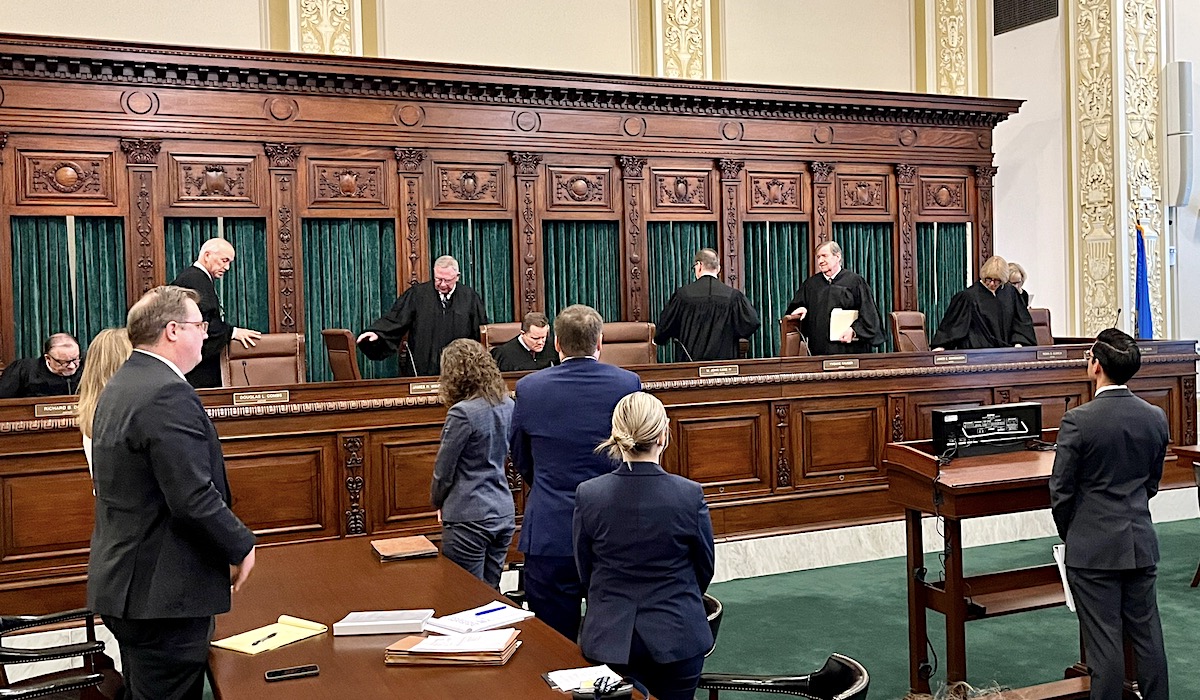
The State Chamber of Oklahoma and the Oklahoma Farm Bureau have opposed State Question 832’s manner of increasing the minimum wage, and they filed challenges to stop signature collection before it began. In short, their legal briefs and oral arguments said SQ 832 “runs afoul” of the Oklahoma Constitution by “delegating the authority” of state wage laws to the federal government.
Beyond that, the opponents have political messages, too. They say an increase isn’t necessary because most employers in the state pay more than $15 per hour, while even a gradual increase in the minimum wage would create headaches for those who don’t and the public at large.
“It will raise prices for consumers and for businesses,” said Lepak, the State Chamber Research Foundation director. “If you think about a hamburger restaurant, and you increase the cost of beef, the cost to create the bun and to pick the lettuce and to staff the restaurant, ultimately what that results in is you’re paying $8 instead of $5. And so, we don’t think this is a good move for Oklahoma. It’s a solution in search of a problem. Most employers are already over what is being proposed as far as hourly pay rates.”
In early March, the Oklahoma State Supreme Court rejected the opponents’ challenge, ruling that the initiative petition does not violate the state or federal constitution and allowing the collection of signatures to proceed. The Farm Bureau and State Chamber of Oklahoma petitioned for a rehearing, but that was also denied.
Still, it’s unclear when Oklahoma’s most recent state question might go before voters if organizers collect enough signatures. Organizers of a petition drive have 90 days to collect signatures. The signatures would then be examined and certified. If enough are validated, the governor would set a statewide election date.
Under Oklahoma law, initiative petitions currently require 92,263 signatures to propose statutory changes and 172,993 for constitutional amendments. Those numbers are based on percentages — 8 percent and 15 percent, respectively — of state voter turnout during the last gubernatorial election.
England said the collection of signatures is underway and more people are being trained to gather support.
“The volunteer engagement has been incredible,” she said. “Before we even started to collect signatures, we were able to train over 100 volunteers and the level of interest and engagement on this issue from voters has been strong. It’s been very similar to Medicaid expansion. I think a lot of people see that it’s just common sense. Our minimum wage is still $7.25, and you have CEOs making millions while working families are struggling. I’m excited about what we’ve seen so far.”
‘Think about an apartment complex’
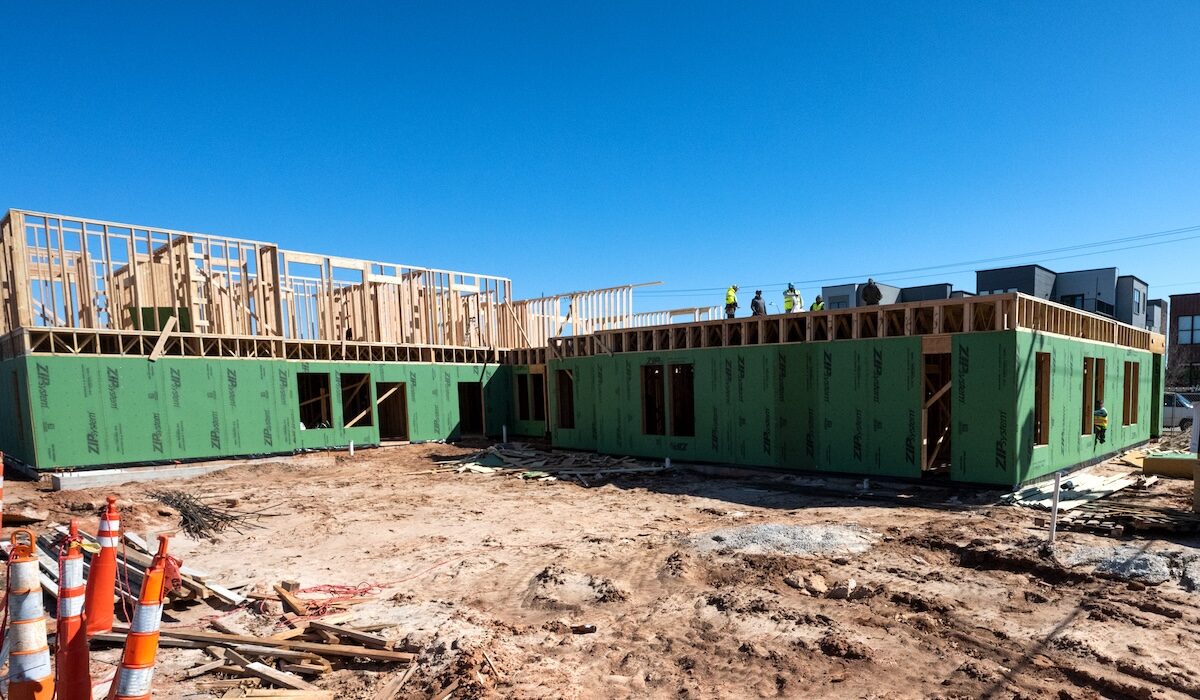
Whether you are a renter or a buyer, Oklahoma’s housing costs have increased in recent years thanks to the pandemic, labor and supply shortages, and inflation that peaked in late 2022.
In the Oklahoma City metro, median monthly rent sits around $1,268, according to a Rent.com, which tracks rental prices nationwide. That’s an increase of 7.46 percent from April 2023. However, those figures can vary. Apartments.com also tracks rent prices and pegs the cost of a 700-square-foot apartment at $877 per month in OKC, which is a slight increase from last year.
Those earning under $20 an hour are often the most sensitive to monthly rent increases and the most at risk of losing their housing arrangement. Even if SQ 832 passes and Oklahoma’s minimum wage eventually increases to $15, the figure still would not meet a threshold the National Low Income Coalition says is necessary to make rent in the Oklahoma City metro.
That organization aims to educate lawmakers and the public on the value of affordable housing. In Oklahoma, an individual needs to earn $18 an hour to afford a two-bedroom rental home, according to NLIC. For a worker employed at the state’s current minimum wage, they would need to put in 99 hours a week to rent such an abode.
England said SQ 832 would help those currently below $15 an hour get closer to being able to afford things like rent, mortgage payments and utility costs, which have also been on the rise.
“Here’s what the data tells us: There are over 320,000 workers that would be impacted by this policy,” she said. “Of that total, 200,000 are women, and there are an estimated 200,000 kids in those homes that would also benefit. When those workers have to face things like rent increases or higher electric bills, it can be devastating. For those people, this policy would be life-changing.”
Roach, the UCO economics professor, said it’s not clear how a minimum wage increase would help those on the margins regarding housing costs.
“It depends on a lot of factors,” he said. “Whether there are two minimum wage earners in the family, those people are still likely to be stretched thin, but having more money coming in obviously would help in some way. It also might allow someone to quit a second job, or one of the adults in the household to cut back on hours at a second job. That would give them time back to use it in other ways that might improve their quality of life.”
But Lepak argues that, like just about everything else, Oklahomans’ cost of living would increase with hikes to the minimum wage.
“Think about an apartment complex. If their costs go up because of SQ 832, again, the people that work in the apartment complex, the construction industry that builds it, all of those things, the rent is going to go up as well,” Lepak said. “I’m not sure it improves their station. They’re going to be paying more for everything. And in the meantime, it does a lot of damage to the economy and the individuals’ pocketbook.”
Gov. Kevin Stitt is also not a fan of an increase in the minimum wage that comes from government action.
“We should let businesses decide,” Stitt said in a press conference earlier this month. “So, an employee and employer relationship, they should decide what that labor is worth, and the government shouldn’t automatically come in and set the minimum wage standards. California, that’s what they believe is the right way to do it, and I think California has passed a minimum wage of $20 or $18 an hour. What you’re seeing is all the goods and services, the prices increase.”
How a higher minimum wage could affect employers
Roach said he considers one of the most attractive aspects of SQ 832 to be how it slowly increases the minimum wage over time and allows those who run businesses a chance to absorb the added labor costs.
“I think that eases concerns that it would cause an increase in unemployment,” Roach said. “I like that it starts at $9 and slowly ratchets up. I think to a lot of people $15 seems like a lot now because it’s a doubling of the current minimum wage, but because there are so many employees already earning more than that now — if you look at Target or 7-Eleven that are already paying $15 or more — so by the time we get to 2029, I don’t expect we will even bat an eye at that.”
Roach said minimum wage increases in other states have produced little in the way of dramatic price increases for consumers and that predictions of economic doom are overblown. He cites California as one example.
“When they moved to $20, there were some studies that looked at grocery stores and found that there was a slight increase in prices, like 0.4 percent, which most people probably wouldn’t notice,” Roach said. “My gut reaction is that when I hear that the sky is falling, there really is no empirical evidence that is true. When you look at granular data on the federal minimum wage, there’s no evidence that it causes unemployment.”
One reason why, Roach said, is that the number of workers affected by SQ 832 would be only a percentage of Oklahoma’s 4 million residents.
“There are about 13 percent of people earning at or below minimum wage so we’re talking about a small segment of the workforce, but for those 130,000 or so people it would be huge,” Roach said.
Still, Roach is not convinced that efforts like SQ 832 are the best approach to raising wages. Instead, he favors a more localized and targeted approach.
“I’m not wholly convinced that a federal minimum wage is a better way, and I’m not convinced doing it at the state level is better either,” Roach said. “I’m more in favor of wage boards. I do think there should be a federal minimum bottom basement wage.”
Lepak said most of the state’s workforce already earns $15 per hour or more, which is all the more reason to not interfere with what’s already happening.
“What we have is a labor shortage in the state,” Lepak said. “Employers can’t find people to fill [jobs], so they’re competing for those people with higher wages. But for the small kind of number like that, where the minimum wage does make sense — maybe someone’s first job entering the workforce, or teenagers — it still represents a significant cost increase to businesses if SQ 832 were to become law.”
England said that given what hourly employees have faced with the pandemic and inflation, even gradual adjustments can make a difference, something she said those who oppose the initiative petition fail to see.
“It will help people pay their rent and afford groceries and put gas in their car to get to their job,” England said. “It’s a very meaningful increase in their paycheck, which might not make much of a difference to executives making $1 million a year, but it is very big to workers.”
(Editor’s note: The State Chamber of Oklahoma is a charitable sponsor of the Sustainable Journalism Foundation.)

